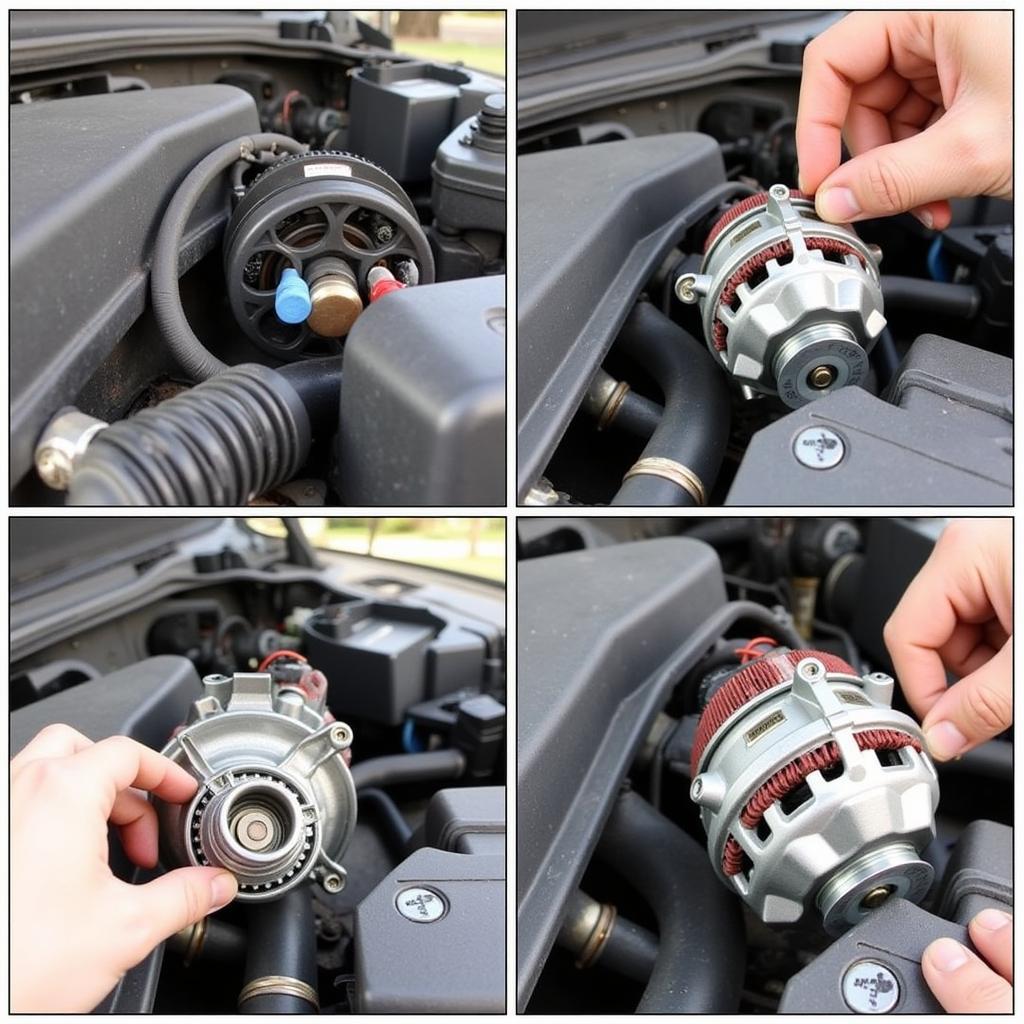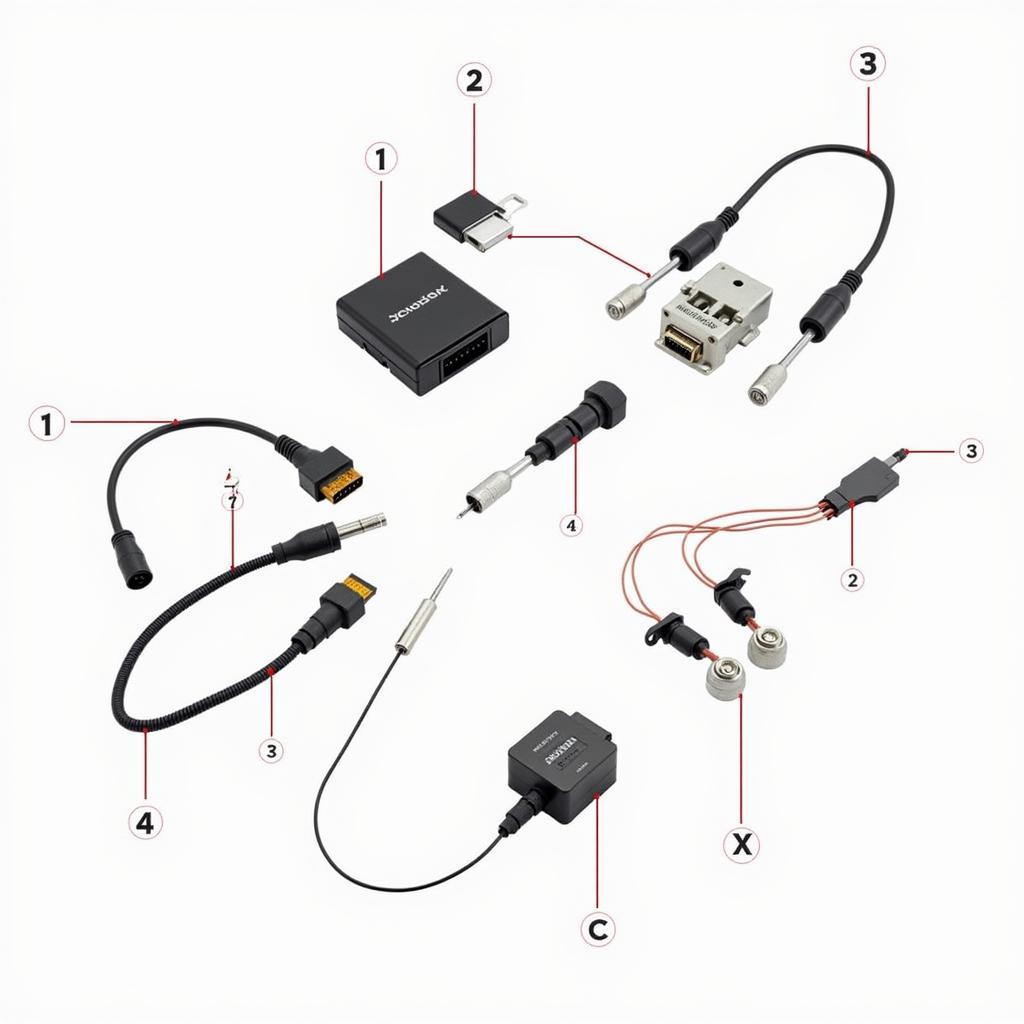A faulty alternator draining your battery is a common car problem that can leave you stranded. This article will guide you through the symptoms, diagnosis, and solutions for a failing alternator, empowering you to tackle the issue head-on and get back on the road. We’ll explore everything from simple checks you can do yourself to more advanced diagnostic techniques.
Is your car battery constantly dying? Does your car’s electrical system seem unreliable? These could be signs of a faulty alternator draining battery. Let’s dive deeper into identifying the problem and how to fix it.
Identifying a Faulty Alternator
A car’s alternator is crucial for charging the battery and powering the electrical system while the engine is running. A failing alternator can’t keep up with the demand, leading to a drained battery and various electrical issues. But how can you tell if your alternator is the culprit?
Common Symptoms of a Faulty Alternator
Several telltale signs point to a faulty alternator. Recognizing these symptoms early can save you from unexpected breakdowns and costly repairs. Here’s what to look out for:
- Dim or flickering headlights: A failing alternator struggles to provide consistent power to the electrical system, causing lights to dim or flicker, especially at idle.
- Dashboard warning light: The battery or charging system warning light on your dashboard is a clear indicator of a charging system problem, often related to the alternator.
- Dead battery: If your car battery keeps dying, even after recent replacements or jump-starts, the alternator might be failing to recharge it properly.
- Strange noises: A worn-out alternator can produce whining or grinding noises due to failing bearings or internal components.
- Electrical malfunctions: Issues with power windows, radio, or other electrical accessories can indicate a failing alternator struggling to supply adequate power.
If you notice any of the above symptoms, you should check your car’s system as soon as possible. If you are looking for information on key fob programming, we have articles on programming a 2013 Dodge Grand Caravan key fob and how to program a VW key fob with push button start.
Diagnosing a Faulty Alternator
While the symptoms mentioned above can indicate a faulty alternator, a proper diagnosis is essential to confirm the issue. Here’s how you can test your alternator:
Simple Tests You Can Do at Home
- Battery voltage test: Use a multimeter to check your battery’s voltage with the engine off. A healthy battery should read around 12.6 volts.
- Running voltage test: Start the engine and check the battery voltage again. A properly functioning alternator should charge the battery, increasing the voltage to around 14-14.8 volts.
- Visual inspection: Look for loose or worn-out belts, corroded connections, or any visible damage to the alternator.
Professional Diagnostic Tools and Techniques
While DIY tests can be helpful, a professional mechanic has access to more sophisticated tools and techniques for a comprehensive diagnosis, such as:
- Dedicated alternator testers: These tools can accurately measure the alternator’s output and diagnose specific issues within the unit.
- Oscilloscope testing: This method allows technicians to analyze the alternator’s waveform and identify underlying problems with the diodes or voltage regulator.
If you are experiencing issues with your anti-theft system, check out our articles on how to disable the anti-theft system on a Chevy Cobalt or if an anti-theft device can cause a buzzing sound in a 2016 Dodge Grand Caravan.
Fixing a Faulty Alternator
Once a faulty alternator is confirmed, the solution is usually a replacement. While replacing an alternator can be a DIY project for some, it’s often best left to a qualified mechanic, especially for complex modern vehicles.
Alternator Replacement: DIY vs. Professional
- DIY replacement: Requires mechanical skills, specialized tools, and careful attention to safety procedures.
- Professional replacement: Ensures proper installation and minimizes the risk of further damage.
 Alternator Replacement Process
Alternator Replacement Process
Conclusion
A faulty alternator draining battery can lead to various issues, from minor inconveniences to major breakdowns. By understanding the symptoms, diagnosis, and solutions, you can address the problem proactively and ensure your car’s electrical system remains reliable. Don’t let a faulty alternator leave you stranded; take charge and get back on the road with confidence.
FAQ
- How long does an alternator typically last? Alternators usually last between 7-10 years, depending on usage and driving conditions.
- Can a bad battery cause alternator problems? While a bad battery can strain the alternator, it doesn’t directly cause alternator failure.
- How much does it cost to replace an alternator? The cost varies depending on the make and model of your car, but typically ranges from $300 to $800.
- Can I drive with a faulty alternator? You can drive a short distance with a faulty alternator, but relying solely on the battery will eventually leave you stranded.
- How can I prevent alternator problems? Regular maintenance, including checking the belts and connections, can help prevent alternator issues.
- Is it safe to jump-start a car with a faulty alternator? Yes, jump-starting is safe, but it’s only a temporary solution. You still need to address the faulty alternator.
- What other components can cause similar symptoms to a faulty alternator? Issues with the voltage regulator, wiring, or even a loose battery cable can mimic alternator problems.



